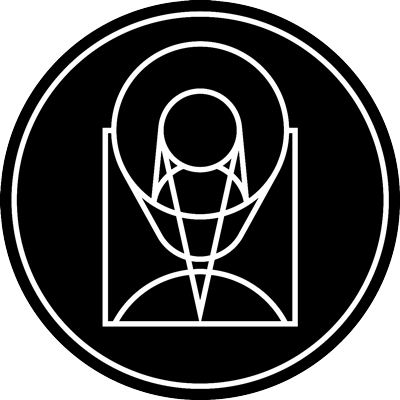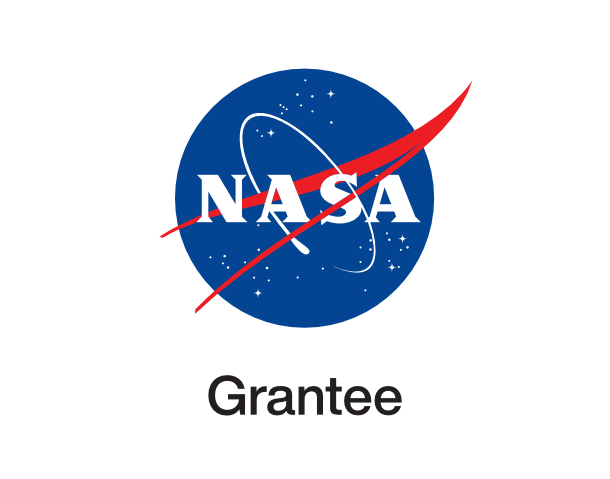'Double' Galaxy Mystifies Hubble Astronomers

stsci_2021-46a October 7th, 2021
Credit: NASA, ESA, R. Griffiths (University of Hawaii) and J. Wagner (University of Heidelberg)
Gazing into the universe is like looking into a funhouse mirror. That's because gravity warps the fabric of space, creating optical illusions. Many of these optical illusions appear when a distant galaxy's light is magnified, stretched, and brightened as it passes through a massive galaxy or galaxy cluster in front of it. This phenomenon, called gravitational lensing, produces multiple, stretched, and brightened images of the background galaxy. This phenomenon allows astronomers to study galaxies so distant they cannot be seen other than by the effects of gravitational lensing. The challenge is in trying to reconstruct the distant galaxies from the odd shapes produced by lensing. Astronomers using the Hubble Space Telescope stumbled upon one such odd shape while analyzing quasars, the blazing cores of active galaxies. They spotted two bright, linear objects that appeared to be mirror images of each other. Another oddball object was nearby. The features so befuddled the astronomers that it took them several years to unravel the mystery. With the help of two gravitational-lensing experts, the researchers determined that the three objects were the distorted images of a faraway, undiscovered galaxy. But the biggest surprise was that the linear objects were exact copies of each other, a rare occurrence caused by the precise alignment of the background galaxy and the foreground lensing cluster.
Provider: Space Telescope Science Institute
Image Source: https://hubblesite.org/contents/news-releases/2021/news-2021-046
Curator: STScI, Baltimore, MD, USA
Image Use Policy: http://hubblesite.org/copyright/

- ID
- 2021-46a
- Subject Category
- D.5.1.8
- Subject Name
- SDSS J223010.47-081017.8
- Credits
- NASA, ESA, R. Griffiths (University of Hawaii) and J. Wagner (University of Heidelberg)
- Release Date
- 2021-10-07T00:00:00
- Lightyears
- 7,000,000,000
- Redshift
- 0.82
- Reference Url
- https://hubblesite.org/contents/news-releases/2021/news-2021-046
- Type
- Observation
- Image Quality
- Good
- Distance Notes
- spectroscopic distance given to lensed galaxy
- Facility
- Hubble, Hubble, Hubble, Hubble
- Instrument
- ACS/WFC, ACS/WFC, WFC3/IR, WFC3/IR
- Color Assignment
- Blue, Green, Red, Red
- Band
- Optical, Optical, Infrared, Infrared
- Bandpass
- V, I, J, H
- Central Wavelength
- 606, 814, 1100, 1400
- Start Time
- Integration Time
- Dataset ID
- Notes
- Coordinate Frame
- FK5
- Equinox
- Reference Value
- 337.5406456250000247, -8.1524862425099993
- Reference Dimension
- 3354.0000000000000000, 2684.0000000000000000
- Reference Pixel
- 909.6482238769999640, 1989.6169052119998923
- Scale
- -0.0000083265799908, 0.0000083265799908
- Rotation
- 0.0110318792091941
- Coordinate System Projection:
- TAN
- Quality
- Full
- FITS Header
- Notes
- Creator (Curator)
- STScI
- URL
- http://hubblesite.org
- Name
- Space Telescope Science Institute Office of Public Outreach
- outreach@stsci.edu
- Telephone
- 410-338-4444
- Address
- 3700 San Martin Drive
- City
- Baltimore
- State/Province
- MD
- Postal Code
- 21218
- Country
- USA
- Rights
- http://hubblesite.org/copyright/
- Publisher
- STScI
- Publisher ID
- stsci
- Resource ID
- STSCI-H-p2146a-f-3354x2684.tif
- Resource URL
- https://mast.stsci.edu/api/latest/Download/file?uri=mast:OPO/product/STSCI-H-p2146a-f-3354x2684.tif
- Related Resources
- Metadata Date
- 2022-06-20T12:11:21-04:00
- Metadata Version
- 1.2
Detailed color mapping information coming soon...















